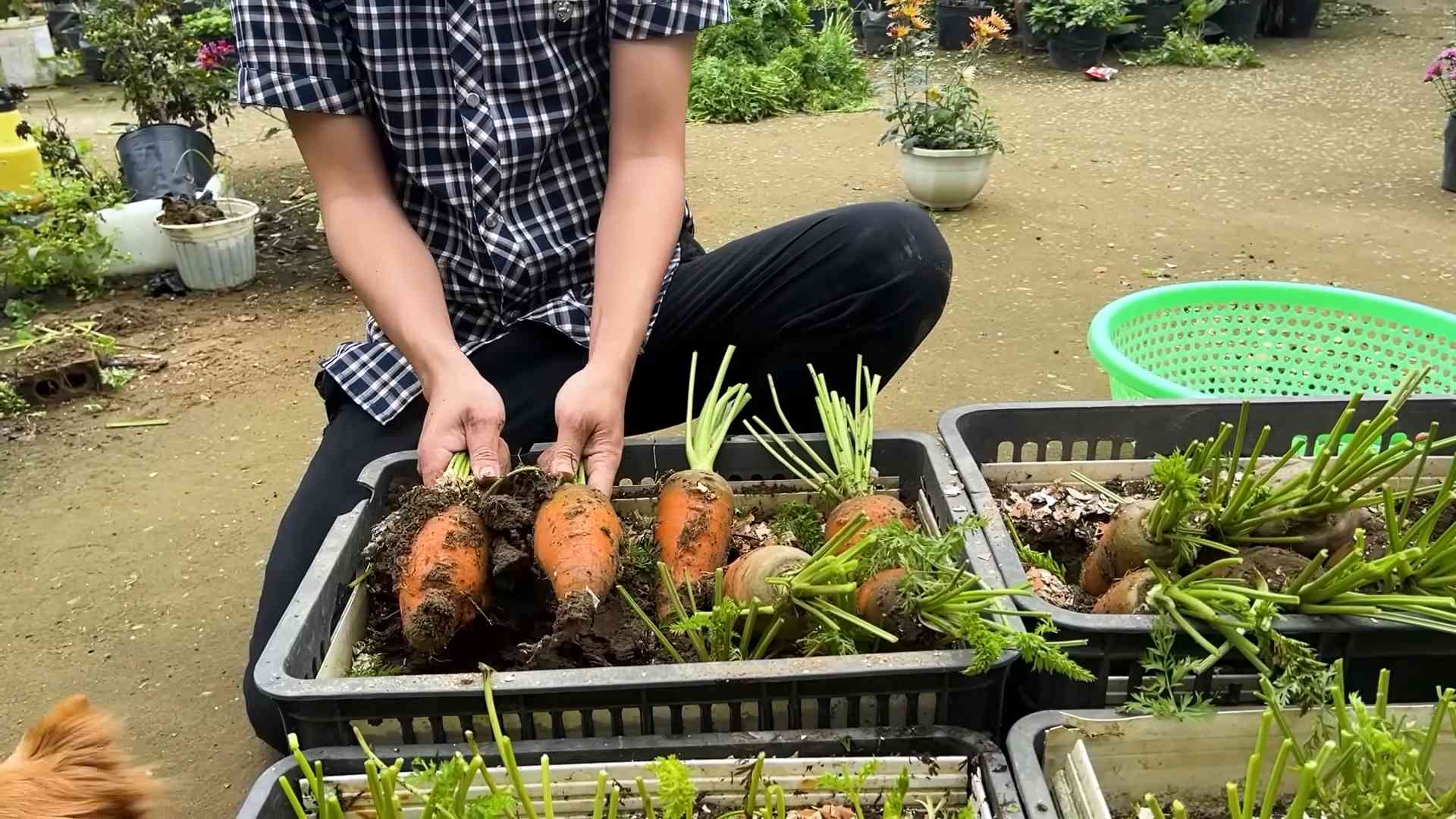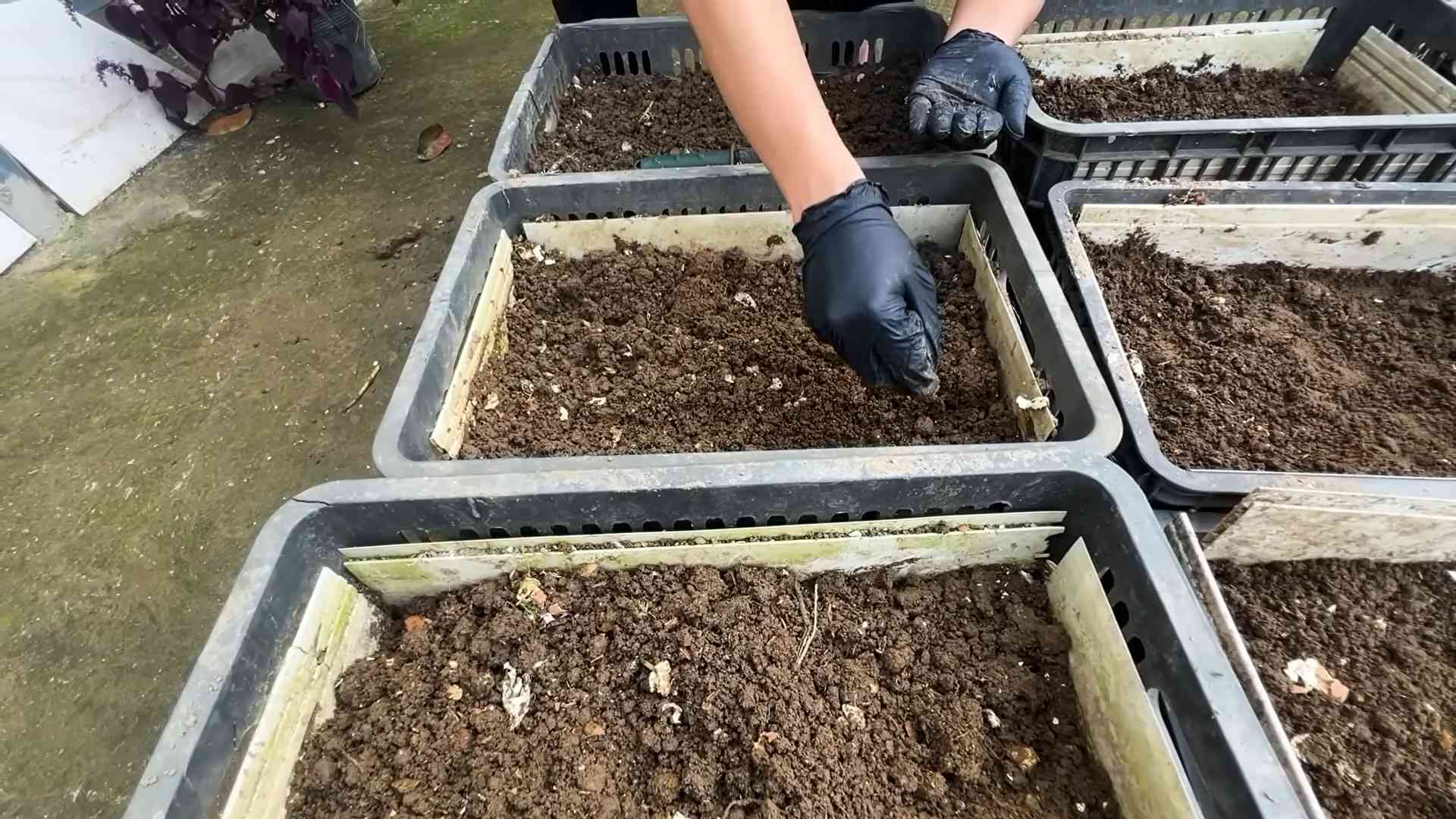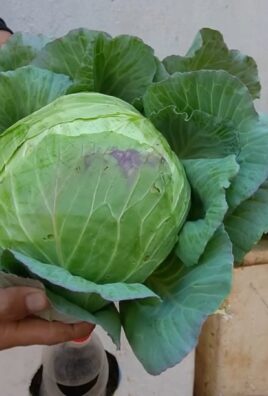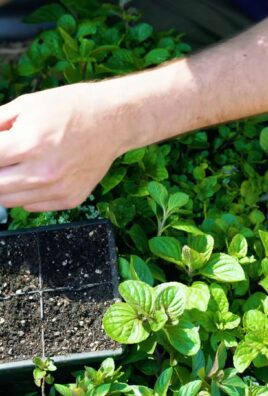Growing Carrots in Containers might sound like a challenge, but trust me, it’s easier than you think! Have you ever dreamed of harvesting your own sweet, crunchy carrots right from your balcony or patio? Imagine the satisfaction of plucking a vibrant orange carrot, still warm from the sun, and knowing you nurtured it from seed to table. That’s the magic of container gardening!
For centuries, humans have cultivated food in limited spaces. From the hanging gardens of Babylon to the rooftop farms of modern cities, the desire to grow our own food is deeply ingrained. But let’s face it, not everyone has access to a sprawling garden. That’s where container gardening comes in, offering a fantastic solution for urban dwellers and anyone with limited space.
Why should you try growing carrots in containers? Well, beyond the sheer joy of gardening, it’s a fantastic way to ensure you’re eating fresh, organic produce. Plus, it’s a budget-friendly alternative to buying carrots at the grocery store, and you get to control exactly what goes into your food. In this article, I’m going to share my favorite DIY tricks and hacks to help you successfully grow delicious carrots in containers, no matter how small your space is. Get ready to get your hands dirty and enjoy the sweet taste of homegrown success!

Growing Carrots in Containers: A Bumper Crop on Your Balcony!
Hey there, fellow gardening enthusiasts! Ever dreamed of pulling fresh, vibrant carrots straight from your own little garden? Well, guess what? You don’t need acres of land to make that dream a reality. Growing carrots in containers is totally doable, even if you only have a small balcony or patio. I’ve been doing it for years, and I’m here to share all my secrets to help you achieve a bountiful carrot harvest right at home.
Choosing the Right Container and Carrot Variety
Before we get our hands dirty, let’s talk about the essentials: the container and the carrot seeds. These two factors are crucial for success.
* **Container Size Matters:** Carrots need room to grow downwards. A deep container is key.
* Minimum Depth: Aim for at least 12 inches deep, but 18-24 inches is even better, especially if you’re growing longer carrot varieties.
* Width: The wider the container, the more carrots you can grow. A container that’s at least 12 inches wide will give your carrots enough space.
* Material: Plastic, terracotta, or even fabric grow bags work well. Just make sure your container has drainage holes!
* **Choosing the Right Carrot Variety:** Not all carrots are created equal, especially when it comes to container gardening.
* Short and Sweet: Look for shorter, rounder varieties like ‘Thumbelina,’ ‘Paris Market,’ or ‘Little Finger.’ These are perfect for containers because they don’t need as much depth.
* Intermediate Length: ‘Nantes’ varieties are also a good choice, as they are relatively short and sweet.
* Avoid Long Varieties: Steer clear of long, slender varieties like ‘Imperator,’ as they might struggle in a container.
Preparing the Perfect Soil Mix
Carrots need loose, well-draining soil to thrive. Compacted soil will result in stunted, misshapen carrots. Here’s my go-to soil mix recipe:
* Equal Parts:
* Potting Mix: A good quality potting mix forms the base.
* Compost: Adds nutrients and improves drainage.
* Sand: Helps with drainage and prevents the soil from becoming too compacted. Horticultural sand is best.
* Optional Amendments:
* Perlite or Vermiculite: These improve drainage and aeration.
* Slow-Release Fertilizer: Provides a steady supply of nutrients.
Planting Your Carrot Seeds
Now for the fun part: planting!
1. Fill the Container: Fill your chosen container with the soil mix, leaving about an inch of space at the top.
2. Water Thoroughly: Moisten the soil well before planting. This helps the seeds germinate.
3. Sow the Seeds: Carrot seeds are tiny, so it’s easy to sow them too densely.
* Spacing: Aim for about 1/2 inch to 1 inch apart.
* Depth: Sow the seeds about 1/4 inch deep.
* Technique: I like to sprinkle the seeds evenly over the surface and then gently press them into the soil.
4. Cover Lightly: Cover the seeds with a thin layer of soil or vermiculite.
5. Water Gently: Water the seeds gently to avoid disturbing them. A spray bottle works well for this.
6. Label Your Container: Don’t forget to label your container with the carrot variety and planting date!
Caring for Your Carrot Seedlings
Once your seeds have sprouted, it’s time to provide them with the care they need to grow into healthy, delicious carrots.
1. Thinning: This is crucial! If you don’t thin your seedlings, they’ll compete for resources and you’ll end up with small, crowded carrots.
* When to Thin: When the seedlings are about 1-2 inches tall.
* How to Thin: Gently pull out the weaker seedlings, leaving about 2-3 inches between the remaining plants.
* Don’t Waste Them: You can eat the thinned seedlings as microgreens!
2. Watering: Carrots need consistent moisture, but they don’t like to be waterlogged.
* Frequency: Water when the top inch of soil feels dry to the touch.
* Technique: Water deeply and evenly, making sure the entire container is moistened.
* Avoid Overwatering: Overwatering can lead to root rot.
3. Sunlight: Carrots need at least 6 hours of sunlight per day.
* Location: Place your container in a sunny spot.
* Rotate: Rotate the container regularly to ensure even growth.
4. Fertilizing: Carrots are heavy feeders, so they benefit from regular fertilization.
* Type of Fertilizer: Use a balanced fertilizer (e.g., 10-10-10) or a fertilizer specifically formulated for root vegetables.
* Frequency: Fertilize every 2-3 weeks, following the instructions on the fertilizer label.
5. Weed Control: Keep your container free of weeds, as they can compete with your carrots for resources.
* Hand-Pulling: Gently pull out any weeds that appear.
* Mulching: A thin layer of mulch can help suppress weed growth.
Dealing with Pests and Diseases
While carrots are relatively pest-resistant, there are a few things to watch out for.
* Carrot Rust Fly: This is a common pest that can damage carrot roots.
* Prevention: Cover your container with a fine mesh netting to prevent the flies from laying their eggs.
* Treatment: If you see signs of carrot rust fly, you can use an organic insecticide like neem oil.
* Aphids: These tiny insects can suck the sap from carrot leaves.
* Treatment: Spray the leaves with a strong stream of water or use an insecticidal soap.
* Leaf Spot Diseases: These fungal diseases can cause spots on carrot leaves.
* Prevention: Ensure good air circulation and avoid overhead watering.
* Treatment: If you see signs of leaf spot, remove the affected leaves and spray with a fungicide.
Harvesting Your Carrots
The moment you’ve been waiting for!
1. Check the Maturity Date: Carrot varieties have different maturity dates, so check the seed packet to see when your carrots should be ready to harvest.
2. Look for Size: You can also harvest your carrots when they reach the desired size.
3. Loosen the Soil: Gently loosen the soil around the carrots before pulling them out.
4. Pull Carefully: Grasp the carrot greens near the base and pull gently but firmly.
5. Enjoy Your Harvest: Wash your carrots and enjoy them fresh from the garden!
Troubleshooting Common Problems
Even with the best care, you might encounter some challenges along the way. Here are some common problems and how to fix them:
* Stunted Growth: This could be due to compacted soil, lack of nutrients, or insufficient sunlight.
* Solution: Amend the soil, fertilize regularly, and ensure your carrots are getting enough sunlight.
* Forked or Misshapen Carrots: This is usually caused by rocks or other obstacles in the soil.
* Solution: Remove any rocks or debris from the soil before planting.
* Bitter Taste: This can be caused by inconsistent watering or hot weather.
* Solution: Water your carrots consistently and provide shade during the hottest part of the day.
* Pale or Yellow Leaves: This could be a sign of nutrient deficiency.
* Solution: Fertilize with a balanced fertilizer.
Extra Tips for Success
* Succession Planting: Sow a new batch of carrot seeds every few weeks to ensure a continuous harvest.
* Companion Planting: Plant carrots with onions, garlic, or rosemary to deter pests.
* Mulching: A layer of mulch can help retain moisture, suppress weeds, and regulate soil temperature.
* Record Keeping: Keep a gardening journal to track your progress and learn from your mistakes.
Growing carrots in containers is a rewarding experience that anyone can enjoy. With a little planning and care, you can have a steady supply of fresh, delicious carrots right at your fingertips. So, grab your seeds, get your hands dirty, and start growing! Happy gardening!

Conclusion
So, there you have it! Growing carrots in containers isn’t just a whimsical gardening experiment; it’s a genuinely rewarding and accessible way to enjoy fresh, homegrown carrots, even if you’re short on space. We’ve walked through the entire process, from selecting the right container and soil to nurturing your seedlings and harvesting your vibrant orange bounty.
But why is this DIY trick a must-try? Because it democratizes gardening. It removes the barriers of large plots of land and challenging soil conditions. It empowers you to cultivate your own food, connect with nature, and experience the unparalleled satisfaction of pulling a perfectly formed carrot from the earth – or, in this case, from your container!
Beyond the practical benefits, growing carrots in containers offers a unique opportunity for experimentation. Feel free to explore different carrot varieties. Nantes carrots, with their shorter, cylindrical shape, are particularly well-suited for container gardening. Consider trying rainbow carrots for a visually stunning harvest. You can also experiment with companion planting. Marigolds, for example, can help deter pests, while rosemary can improve the flavor of your carrots.
Don’t be afraid to get creative with your container choices, too. While we’ve emphasized the importance of depth, you can use a variety of materials, from repurposed buckets to stylish planters. Just ensure adequate drainage to prevent waterlogging.
And speaking of drainage, remember that consistent watering is key, but overwatering can be detrimental. Check the soil moisture regularly and adjust your watering schedule accordingly. A good rule of thumb is to water when the top inch of soil feels dry to the touch.
Growing carrots in containers is more than just a gardening project; it’s an investment in your well-being. It’s a chance to slow down, connect with nature, and enjoy the fruits (or vegetables!) of your labor.
We wholeheartedly encourage you to give this DIY trick a try. It’s easier than you might think, and the rewards are immeasurable. Once you’ve harvested your first batch of homegrown carrots, you’ll be hooked!
But the journey doesn’t end here. We want to hear about your experiences! Share your tips, tricks, and triumphs in the comments below. What varieties did you try? What challenges did you face? What did you learn? Your insights will help other aspiring container gardeners succeed. Let’s build a community of carrot-growing enthusiasts!
So, grab your containers, gather your seeds, and get ready to embark on a rewarding gardening adventure. Happy growing! And remember, the sweetest carrots are the ones you grow yourself. This method of growing carrots in containers is a game changer for urban gardeners.
Frequently Asked Questions (FAQ)
What is the best type of container for growing carrots?
The most important factor when choosing a container for growing carrots is depth. Carrots need at least 12 inches of soil to develop properly, and ideally, 18-24 inches is even better, especially for longer varieties. The container should also have drainage holes to prevent waterlogging. Material-wise, plastic, terracotta, or even repurposed containers like buckets or large storage bins can work well. Just make sure they are clean and free of any harmful chemicals. Wider containers are also preferable, as they allow for more carrots to be planted.
What kind of soil should I use for growing carrots in containers?
Carrots thrive in loose, well-draining soil that is rich in organic matter. Avoid heavy clay soils, as they can hinder root development and result in misshapen carrots. A good potting mix specifically formulated for vegetables is an excellent choice. You can also create your own mix by combining equal parts of compost, peat moss (or coco coir), and perlite or vermiculite. The compost provides nutrients, the peat moss or coco coir helps retain moisture, and the perlite or vermiculite improves drainage. Ensure the soil is free of rocks and debris, as these can also interfere with carrot growth.
How often should I water my container carrots?
Watering frequency depends on several factors, including the weather, the type of container, and the soil composition. Generally, you should water your carrots when the top inch of soil feels dry to the touch. Water deeply, ensuring that the entire root zone is moistened. Avoid overwatering, as this can lead to root rot. During hot, dry weather, you may need to water more frequently, perhaps even daily. In cooler, wetter weather, you can water less often. A good way to check the soil moisture is to insert your finger into the soil. If it feels dry, it’s time to water.
How much sunlight do carrots need when grown in containers?
Carrots need at least 6 hours of direct sunlight per day to thrive. Choose a location for your container that receives ample sunlight. If you live in a particularly hot climate, you may want to provide some afternoon shade to prevent the soil from drying out too quickly. If you don’t have a sunny spot, you can supplement with grow lights. Rotate the container regularly to ensure that all sides of the plants receive equal sunlight.
When should I thin my carrot seedlings?
Thinning is crucial for ensuring that your carrots have enough space to develop properly. Once your seedlings are a few inches tall, thin them to about 2-3 inches apart. This will give each carrot enough room to grow without being crowded. When thinning, gently pull out the weaker seedlings, being careful not to disturb the roots of the remaining plants. You can use small scissors to snip the seedlings at the soil line if you are concerned about disturbing the roots.
What are some common pests and diseases that affect carrots, and how can I prevent them?
Common pests that affect carrots include carrot rust flies, aphids, and nematodes. Diseases include leaf blight and root rot. To prevent these problems, start with healthy soil and seeds. Practice crop rotation to avoid building up pests and diseases in the soil. Use companion planting to deter pests. For example, planting marigolds near your carrots can help repel nematodes. Regularly inspect your plants for signs of pests or diseases and take action promptly. You can use organic pesticides or fungicides if necessary. Ensure good air circulation to prevent fungal diseases.
How do I know when my carrots are ready to harvest?
Carrots are typically ready to harvest 60-80 days after planting, depending on the variety. Check the seed packet for specific maturity dates. You can also gauge ripeness by the size of the carrots. Gently brush away some of the soil around the base of the plant to check the diameter of the carrot. If they are the size you desire, they are ready to harvest. You can also harvest a few carrots early to test their flavor and texture. To harvest, gently loosen the soil around the carrot and pull it straight up.
Can I grow carrots in containers indoors?
Yes, you can grow carrots in containers indoors, but you will need to provide them with adequate light. A sunny windowsill that receives at least 6 hours of direct sunlight per day is ideal. If you don’t have a sunny windowsill, you can use grow lights. Place the grow lights a few inches above the plants and keep them on for 12-16 hours per day. Ensure that the container is large enough to accommodate the carrot roots.
What are some good companion plants for carrots in containers?
Good companion plants for carrots include marigolds, rosemary, onions, garlic, and sage. Marigolds help repel nematodes, while rosemary can improve the flavor of the carrots. Onions and garlic can deter carrot rust flies. Sage can help protect against certain pests. Avoid planting carrots near fennel, as it can inhibit their growth.
Can I grow carrots in containers year-round?
Whether you can grow carrots in containers year-round depends on your climate. In mild climates, you can grow carrots throughout the year. In colder climates, you may need to protect your plants from frost. You can do this by moving the containers indoors or covering them with a frost blanket. You can also start seeds indoors in late winter or early spring and transplant them outdoors after the last frost.




Leave a Comment